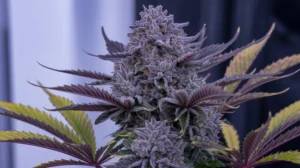What Are Terpenes? And Why Do I Care?

🌿 The Terpene Experience 🌿
Click any card to flip and discover the magic!
Myrcene
Smells like: Earthy, musky cloves
Also in: Mangoes, hops, thyme
👆 Click to learn more
The Couch-Lock King
- Deep relaxation
- Sedation & sleep aid
- Muscle tension relief
- Enhanced THC absorption
Popular Strains:
OG Kush
GDP
Blue Dream
GDP
Blue Dream
🏆 “Heavy myrcene = heavy eyelids. This is your nighttime terp.”
Limonene
Smells like: Citrus zest
Also in: Lemons, oranges, juniper
👆 Click to learn more
The Mood Lifter
- Elevated mood
- Stress & anxiety relief
- Mental clarity
- Anti-inflammatory
Popular Strains:
Super Lemon Haze
Durban Poison
Jack Herer
Durban Poison
Jack Herer
🏆 “Like someone peeled an orange in your face. Instant mood boost.”
Caryophyllene
Smells like: Black pepper, spice
Also in: Black pepper, cinnamon
👆 Click to learn more
The Spicy Healer
- Pain relief
- Anti-inflammatory
- Anxiety reduction
- Acts like a cannabinoid
Popular Strains:
GSC
Original Glue
Purple Punch
Original Glue
Purple Punch
🏆 “The only terpene that binds to CB2 receptors. Science is wild.”
Pinene
Smells like: Pine forest
Also in: Pine needles, rosemary
👆 Click to learn more
The Focus Friend
- Enhanced alertness
- Memory retention
- Counteracts THC anxiety
- Bronchodilator
Popular Strains:
Jack Herer
Blue Dream
Dutch Treat
Blue Dream
Dutch Treat
🏆 “Perfect for daytime. High without the brain fog.”
Linalool
Smells like: Lavender fields
Also in: Lavender, coriander
👆 Click to learn more
The Chill Pill
- Anxiety relief
- Calming sedation
- Anti-depressant
- Pain management
Popular Strains:
Zkittlez
Do-Si-Dos
Kosher Kush
Do-Si-Dos
Kosher Kush
🏆 “Smells like grandma’s lavender soap, hits like a warm hug.”
Quick Terpene Tips
🥭 Mango Hack
Eat a mango 45 minutes before smoking. The myrcene helps THC cross the blood-brain barrier faster!
🏆 Judge’s Secret
After 15 years judging competitions, I can identify dominant terpenes blindfolded. Trust your nose!
💡 Pro Tip
Stop chasing THC percentages. A 18% strain with the right terps beats 30% THC with no flavor.
Suggested Articles
;)
;)
;)




 15 Dec 2025
15 Dec 2025  9 min read
9 min read


 July 13, 2023
July 13, 2023 


RESPONSES (0)
No responses yet. Be the first to respond!